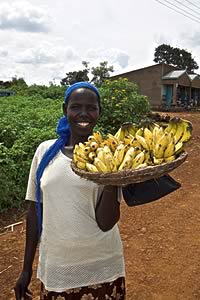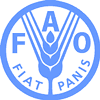 |
|||||||||
|
|||||||||||||||||||
|
|
Agricultural Commodity Prices Expected to Remain High Agricultural commodity prices should ease from their recent record peaks but over the next 10 years they are expected to average well above their mean levels of the past decade, according to the latest Agricultural Outlook from OECD and the UN Food and Agriculture Organization (FAO).
Current high food prices will hit the poor and hungry people hardest, particularly urban net food buyers and rural non-food producers in low income countries. Humanitarian aid must be urgently mobilized to face this dramatic situation, but to find sustainable solutions and avoid similar cases in the future, the emphasis in these countries must be on boosting agricultural production and productivity as well as growth and broader economic development. “The way to address rising food prices is not through protectionism but to open up agricultural markets and to free up the productive capacity of farmers, who have proven repeatedly that they will respond to market incentives,” said OECD Secretary-General Angel Gurría at the Outlook’s launch in Paris. “Governments can also do more to foster growth and development in poor countries, so as to improve the purchasing power of the most vulnerable food buyers.” Food prices and their impact on the world economy will be one of the issues that will be addressed at the OECD Ministerial Council Meeting in Paris on 4-5 June 2008. At a separate summit at FAO headquarters in Rome, on 3-5 June, world leaders, including many Heads of State and Government from around the world, will discuss policies and strategies on how to improve and ensure world food security and re-launch agriculture in rural communities of developing countries. “Coherent action is urgently needed by the international community to deal with the impact of higher prices on the hungry and poor,” Jacques Diouf, Director-General of the FAO said at a press confence launching the Outlook in Paris. “Today some 862 million people are suffering from hunger and malnourishment – this highlights the need to re-invest in agriculture. It should be clear now that agriculture needs to be put back onto the development agenda.” In comparing averages of the coming decade with those of the past, real prices, i.e. nominal prices corrected for inflation, are projected to increase in a range from less than 10 percent for rice and sugar, under 20 percent for wheat, around 30 percent for butter, coarse grains and oilseeds to over 50 percent for vegetable oils, according to the report. More volatile Prices may also become more volatile because stock levels are expected to remain low and as some of the demand for agricultural commodities becomes less responsive to price changes. The recent increase in investment funds on commodity futures markets might also become an additional factor in price variability. Climate change, too, would affect crop production and supply in unforeseen ways. The report says that drought in some of the world’s main grain-producing regions in the context of low stocks was a large – but transitory – factor in the sharp price rises of the past two years. More permanent factors such as high oil prices, changing diets, urbanisation, economic growth and expanding populations, are also at play and are behind the expectation of higher average prices in the coming ten years relative to the past decade. Growing demand for biofuel is another factor contributing to higher prices. World fuel ethanol production tripled between 2000 and 2007 and is expected to double again between now and 2017 to reach 127 billion litres a year. Biodiesel production is seen to expand from 11 billion litres a year in 2007 to around 24 billion litres by 2017. The growth in biofuel production adds to demand for grains, oilseeds and sugar, so contributing to higher crop prices. In OECD countries, at least, the growth of biofuel production has thus far been driven largely by policy measures, and the report says that it is not clear that the energy security, environmental and economic objectives of biofuel policies will be achieved with current production technologies. The report suggests further review of existing biofuel policies. Among other findings of the report are the following:
|
||||||||||||||||||

|
|
||||||||||||||||||
| home | agri-services | pedigree
pen | news | dairy | beef | machinery property | organisations | site map |
|||||||||||||||||||


